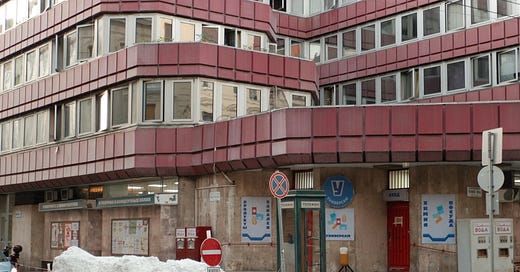It Was Always Winter Behind the Iron Curtain
From gelato to gulags: A walk through modern Budapest and the ghost of Soviet winters
It’s nearly 100 degrees Fahrenheit outside here in Budapest, yet somehow it’s still winter in the Cold War. When I stepped off the bus yesterday after a trip downtown to try the latest buzzworthy gelato, this greeted me on my walk home:
A film set transformed the neighborhood into a wintry Soviet street.
There’s a certain kind of older, chatty Hungarian man I run into now and then. Luckily, today’s was the security guard overseeing the set. He was eager to talk.
“They’re filming an American Cold War–era movie,” he told me, grinning. “Big American actors. It’s set in Russia. In the winter, of course.”
He may be right. Two?! Russell Crowe post-WWII films are shooting in Budapest this year—maybe this is one of them.
Turning to my son, I said, “Of course it’s winter.”
I’ve been trying for years to explain to him why my mental image of life behind the Iron Curtain doesn’t match what people here—those who actually lived it—describe.
Nearly every day, I find myself explaining how 1980s history and geography textbooks shaped my understanding of this part of the world. Why, even now, I look at my adopted home with wonder and disbelief.
In my mind, it was always winter in the communist USSR. Always bleak. Picture it, I often say: heavy coats, breadlines, gray skies. People are starving, queueing outside shops with nothing on the shelves. Everyone dressed like it was still the 1800s, fur hats and all.
On the rare occasions westerners got in, I was told. They’d come, laden with a bag of Levi’s and contraband, and these deprived folks would descend like crows and pick us clean of our denim and banned books and Michael Jackson records.
Nowadays, in museums and elsewhere, when he and I look at pictures of that era, though, nothing could be further from the truth.
People were dressed in current fashion (quite unfortunate in the 70s and 80s). They were at cafes, eating cakes, and driving boxy Russian cars, and even (gasp!) going to beaches and their summer homes.
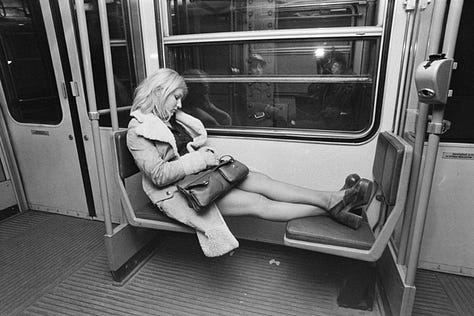
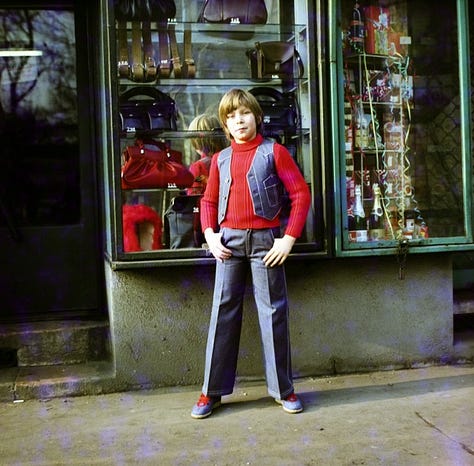
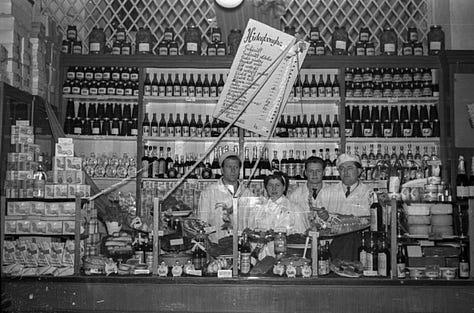
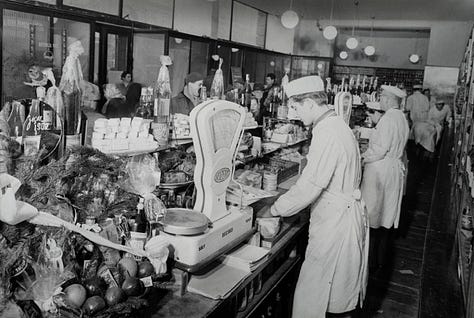
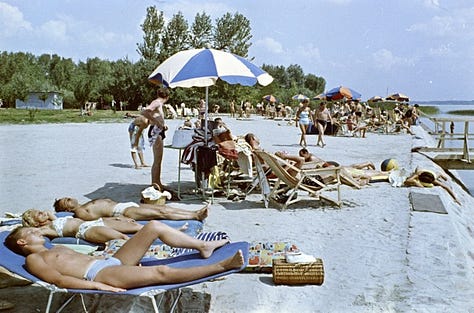

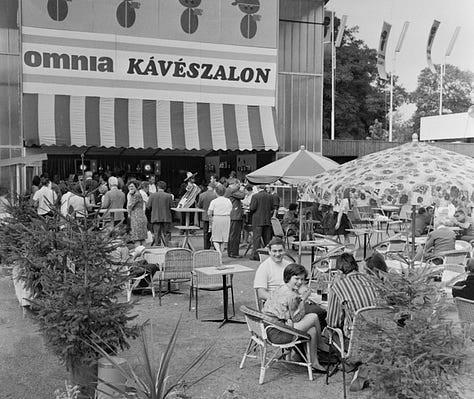
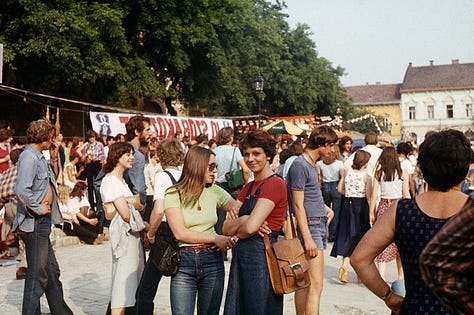

But now, in museums and photo archives, I see something different. People in polyester bell-bottoms and oversized sunglasses. Women eating cake at cafes. Families driving boxy Russian cars to their summer homes. People on beaches, of all places.
That cognitive dissonance is hard to shake. It’s also a testament to just how effective propaganda can be.
So it was with a bit of vindication that I looked at this movie set—a postwar world constructed to match exactly the image I grew up with. Someone was carving styrofoam to look like mounds of snow. The requisite Soviet-era cars lined the street. Daylight was dimmed to a muted gray.
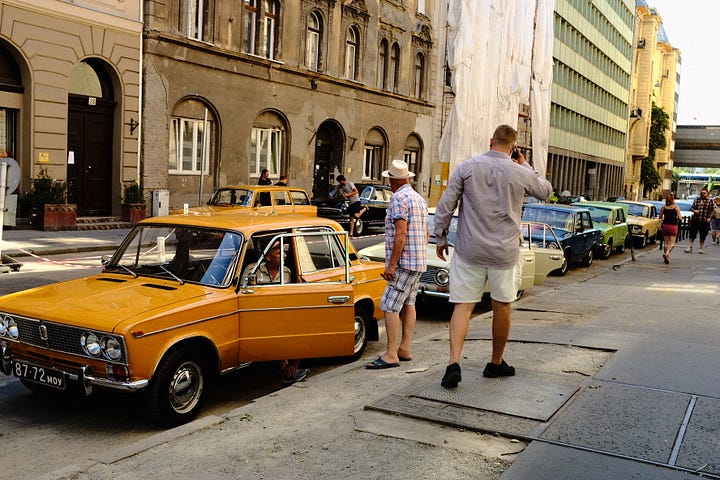
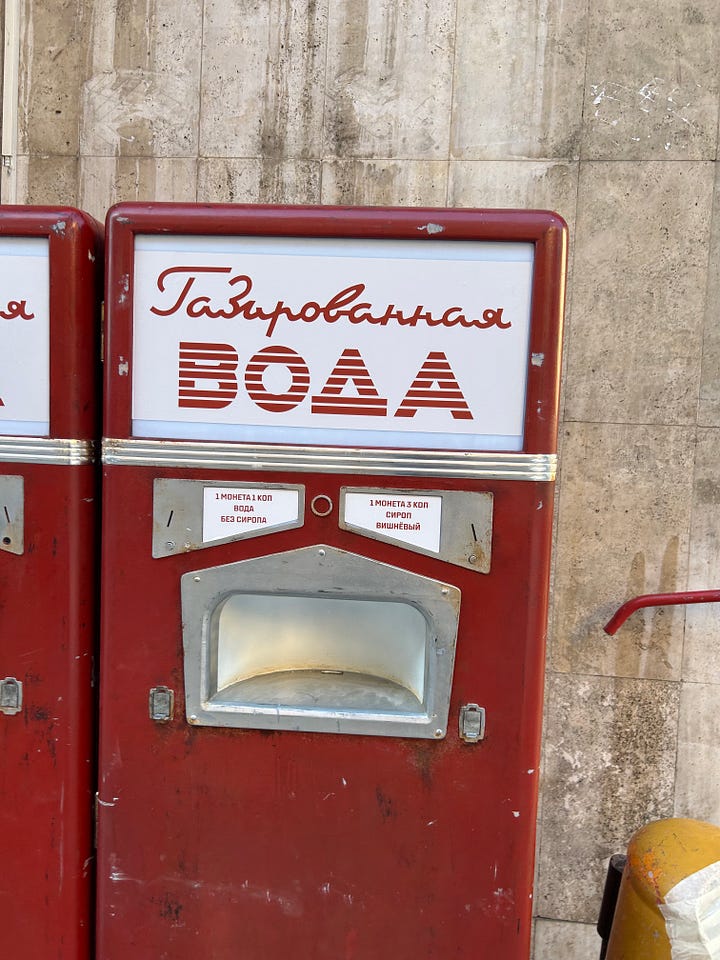

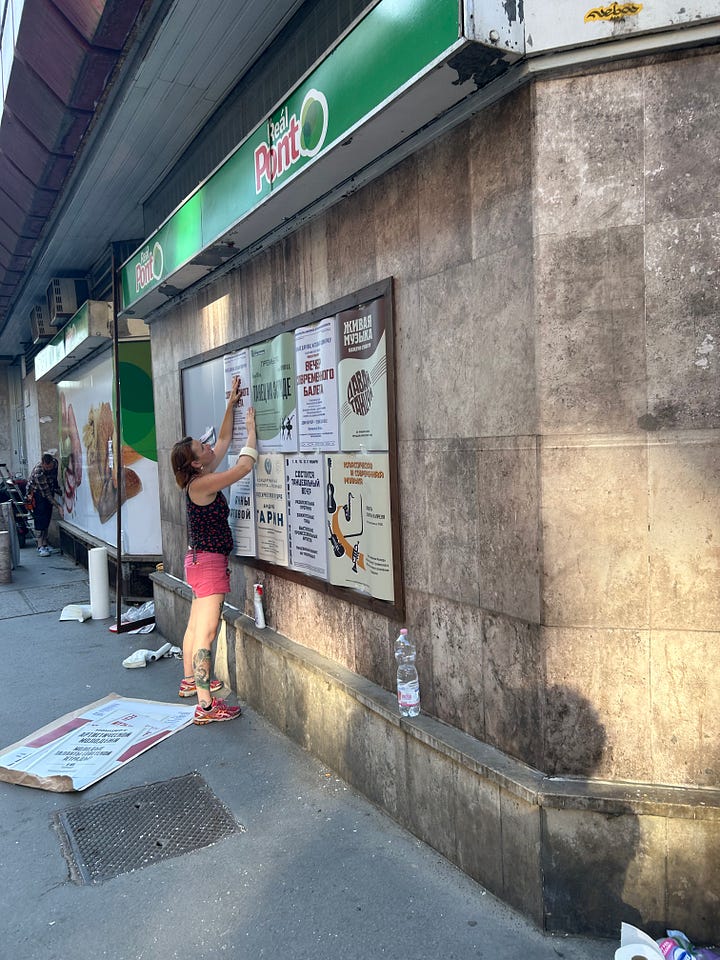
I’m not here to romanticize the Cold War from either side. Museums like the House of Terror and Memento Park in Budapest tell the truth bluntly—and they don’t sugarcoat the past. But I do believe in balance. Just as we can look back on the 1950s and 1980s in America and see both suburban prosperity and the unraveling of our social safety net—riots, racism, deregulation, consumerism—we can also acknowledge that life in the East wasn’t always a wasteland of deprivation.
The narratives we grow up with—rosy on one side, grim on the other—are myths, constructed and curated by those in power to influence how we think, behave, and vote.
In this era of social media and artificial intelligence, it’s more important than ever to pause and ask: Whose version of reality am I seeing? And what truths might lie in between the images?
Aime Austin is the author of the Casey Cort and Nicole Long legal thriller series, weaving sharp social commentary into gripping crime fiction. Born in Brooklyn, Aime graduated from Smith College and Cornell Law School before practicing family and criminal law in Cleveland, Ohio. She now splits her time between Los Angeles and Budapest, writing thrillers, hosting the podcast A Time to Thrill, and interviewing brilliant women creators. When she’s not chasing down a plot twist, you’ll find her in a yoga pose, with knitting needles in hand, or lost in a good book. Aime is a 2025 recipient of the Mystery Writers of America Barbara Neely Scholarship.
Enjoyed this piece? I also write fiction that explores truth, perception, and power—just like the stories we tell ourselves about history.
I’m currently publishing a free serialized short story here on Substack. You can read the first installment right here if you’re in the mood for something immersive and suspenseful.
[Gallery picture credit: fortepan.hu. From left to right, top to bottom, Fortepan credits are as follows: Fortepan / Kereki Sándor, Fortepan / Szalay Béla, Fortepan / Hámori Gyula, Fortepan / Kotnyek Antal, Fortepan / Handa család, Fortepan / Vimola Károly, Fortepan / Bauer Sándor, Fortepan / Kovacsik Tamás, Fortepan / Urbán Tamás. All other pictures are from the author.]


